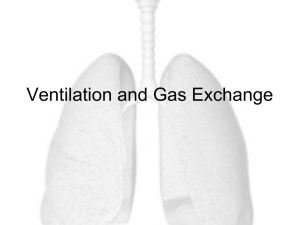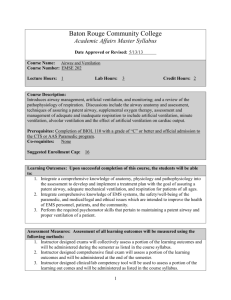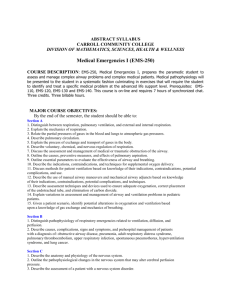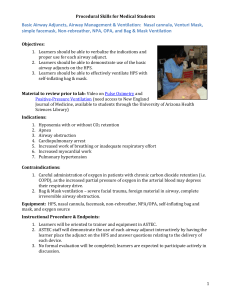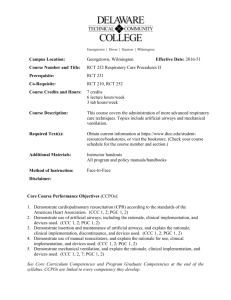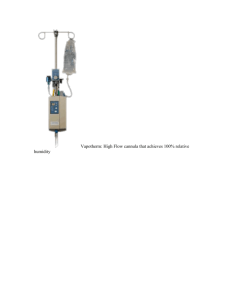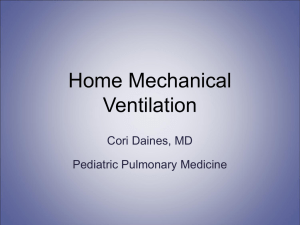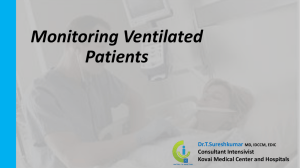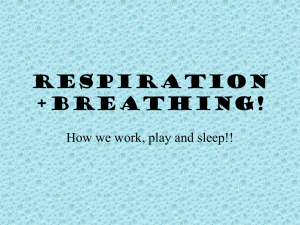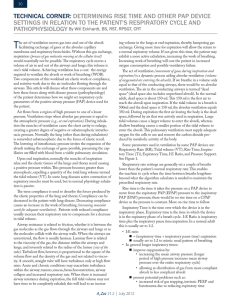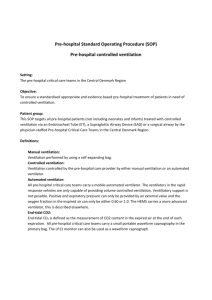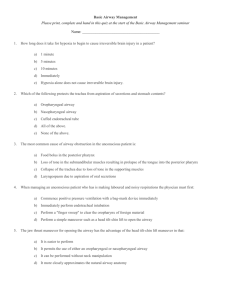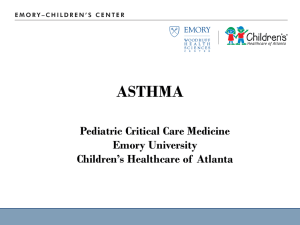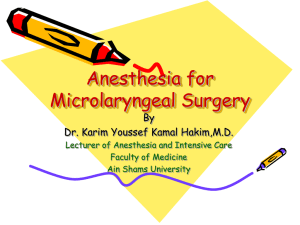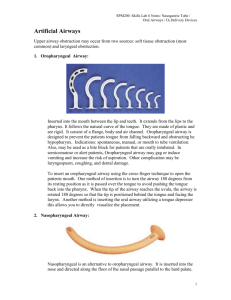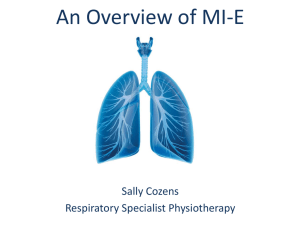Respiratory System Review
advertisement
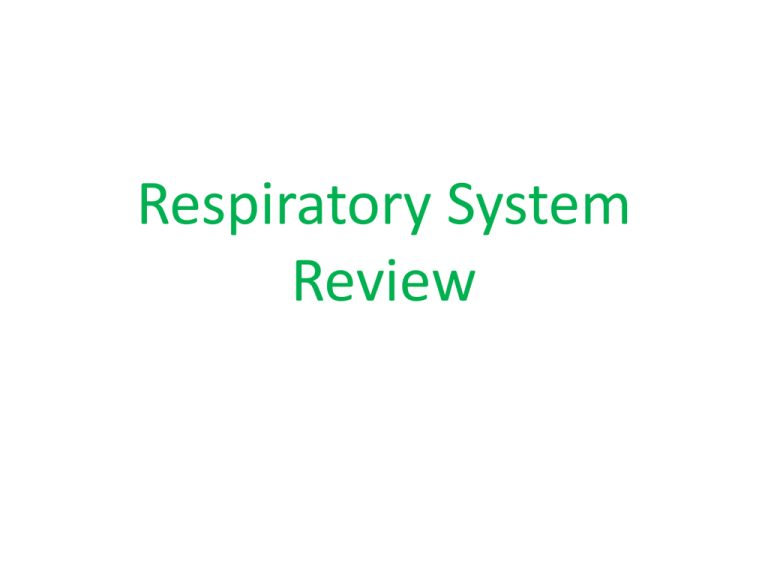
Respiratory System Review Snapshots from the Journey • Moving approximately 12,000 quarts of air each day, the respiratory system is responsible for oxygenating the blood. It carries the oxygen to the tissue and removes carbon dioxide, the waste product of cell metabolism. • Ventilation is the movement of gas into the alveoli, respiration is the gas exchange that takes place in the alveoli. Snapshots from the Journey (cont’d) • The lungs contain ever-branching airways called bronchi and bronchioles. • At the end of each bronchiole are alveoli. • Each alveolus is surrounded by capillaries where gas exchange occurs. Snapshots from the Journey (cont’d) • The purpose of the upper airways is to filter, warm, and humidify air. • Olfaction (sense of smell) and phonation (speech) also occurs in the upper airways. • The mucociliary escalator captures foreign particles and the hair-like cilia constantly move a layer of mucus up to the upper airway to be swallowed or expelled. • Adenoids and tonsils aid in preventing pathogens from entering the body. • The epiglottis protects the airway to the lungs from accidental aspiration of food and liquids. Snapshots from the Journey (cont’d) • Vocal cords are the gateway between the upper and lower airway. • The tracheobronchial tree is like an upside down tree with ever-branching airways where the trunk of the tree is the trachea and the leaves are the alveoli. • The alveolar capillary membrane is where external respiration, or gas exchange, occurs. Tracheobronchial tree Bronchioles Snapshots from the Journey (cont’d) • The bony thorax provides support and protection. • The main muscle of breathing is the diaphragm, while accessory muscles assist in times of need. • The medulla oblongata is the control center for ventilation. Site of gas exchange Close up of site of gas exchange Case Study • A patient comes to the emergency department with wheezing and thick secretions. His heart rate, breathing rate, and blood pressure are all increased. He is using accessory muscles of ventilation to breathe and peripheral cyanosis. He has a history of asthma, and has had “bad cold” for several days. Case Study (cont’d) • What are two possible respiratory conditions he may have? • Can you think of some recommended treatments for this patient? • What would be some positive indicators that the treatment is working? For example, after the treatment, you notice less accessory muscle use. Can you think of at least two more? End of Chapter Review Questions 1. The process of gas exchange between the alveolar area and the capillary is: a. b. c. d. External ventilation Internal ventilation Internal respiration External respiration End of Chapter Review Questions 2. The bulk movement of gas within the lung is called: a. b. c. d. Internal respiration Ventilation Diffusion Gas exchange End of Chapter Review Questions 3. Which of the following is not a function of the upper airway? a. b. c. d. Humidification Gas exchange Filtration Heating or cooling gases End of Chapter Review Questions 4. The largest cartilage in the upper airway is the: a. b. c. d. Cricoid Eustachian Mega cartilage Thyroid End of Chapter Review Questions 5. Which structure controls the opening to the trachea: a. b. c. d. Esophagus Hypoglottis Epiglottis Hyperglottis End of Chapter Review Questions 6. Small bronchi are called __________ . 7. The sense of smell is termed ________ and the act of speech is called _______ . 8. The hairlike projections called ______ beat within the _______ layer and propel the _______ layer towards the oral cavity to be expectorated. 9. The ______ are thought to lighten the head and provide resonance for the voice. End of Chapter Review Questions 10. The ______ and the _______ are part of the immune system and are found in the nasopharynx and oral pharynx. 11. Describe the tissue layers in the bronchi. 12. Explain how gas exchange takes place in the lungs. 13. Discuss the importance of surfactant. 14. Describe the process of normal breathing, beginning with the brain.
